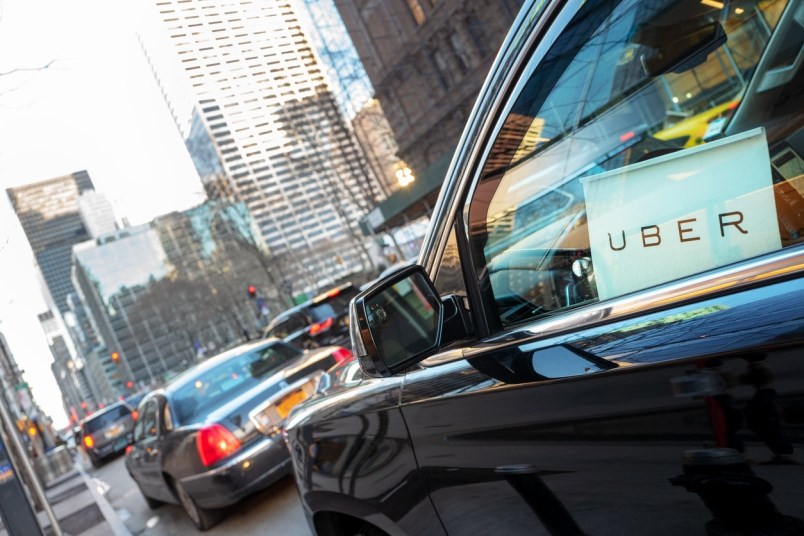What happened: Passenger Transportation Board has clarified rules for ride-hailing, ranging from pricing to boundaries
Why it matters: While a number of operators have announced plans to work in B.C. market, Uber has so far not made such a commitment
Don’t expect B.C. to be bounding with discount rides when ride-hailing arrives on the West Coast.
Among the big revelations out Monday (Aug. 19) from the province’s Passenger Transportation is that prices for ride-hailing services will face a minimum rate.
The province will require this floor to be based on taxi flag rates within an operating area.
In Metro Vancouver that runs between $3.25 and $3.95 when someone steps inside a vehicle in addition to prices charged for distance travelled.
“Transportation network services will also not be able to use coupons on discounts to charge below this rate,” Passenger Transportation Board chairperson Catharine Read told reporters in a conference call, referring to ride-hailing services by a technical term.
She added ride-hailing operators will, however, be able to raise prices during peak periods as demand swells.
“That expands the supply of drivers to meet passenger demand at peak [times],” Read said, adding passengers and drivers will be provided with an estimate of the cost of a trip or up-front prices before a ride is accepted.
“If a passenger thinks the fare is too high, they can take a taxi or alternative transportation.”
Read also revealed that ride-hailing services won’t face caps on fleet sizes and will be permitted to operate within larger boundaries than taxis.
For example, one boundary in the province will consist of Metro Vancouver, the Fraser Valley and Squamish-Lillooet, while another will consist of the entire Capital Regional District on Vancouver Island.
Read said restricting boundaries based on cities conflicted too much with the business model of ride-hailing services.
It’s a move, however, that she admitted won’t please many taxi operators.
“They’re not OK with it, especially the taxi companies based out of Surrey and the suburbs in Metro Vancouver,” Read said.
“They’re not happy with it because they’re restricted to their existing boundaries.”
Taxi companies are free to apply for a licence to operate as a ride-hailing service, but they will have to abide by the same regulations as their competitors.
While ride-hailing companies will initially not face restrictions on fleet sizes, this could change later on as the government collects and reviews data from operators — as will be required if they wish to be licensed — to determine if congestion is becoming an issue in some areas.
The Passenger Transportation Board also revealed that on cruise ship days in downtown Vancouver, ride-hailing vehicles will be prohibited from entering the immediate vicinity of Canada Place in a bid to stave off congestion and ensure pedestrians can move safely through the area.
Instead, Read said her organization has identified a staging area near the port that those vehicles could be directed to.
One of the biggest question marks hanging over the province right now is how soon before ride-hailing services hit the roads of B.C.
Read reiterated a previous estimate from government that this should be expected by the end of the year.
But her announcement indicated it could happen as soon as late October or early November.
The Passenger Transportation Board begins accepting applications from potential operators on Sept. 3, while Read said this process is expected to take six to eight weeks before a decision is made.
Last week, Lyft Inc. announced it intended to operate in the B.C. market.
No such commitment has been made by Uber Technologies Inc., which still appeared on the fence as of late last month.
For the time being Uber has been pushing potential drivers to acquire a Class 4 driver’s licence as required under the B.C. ride-hailing regime.
Class 4 licences are less common than the standard Class 5 licences and require additional testing and checks on drivers.
Click here for original article.



